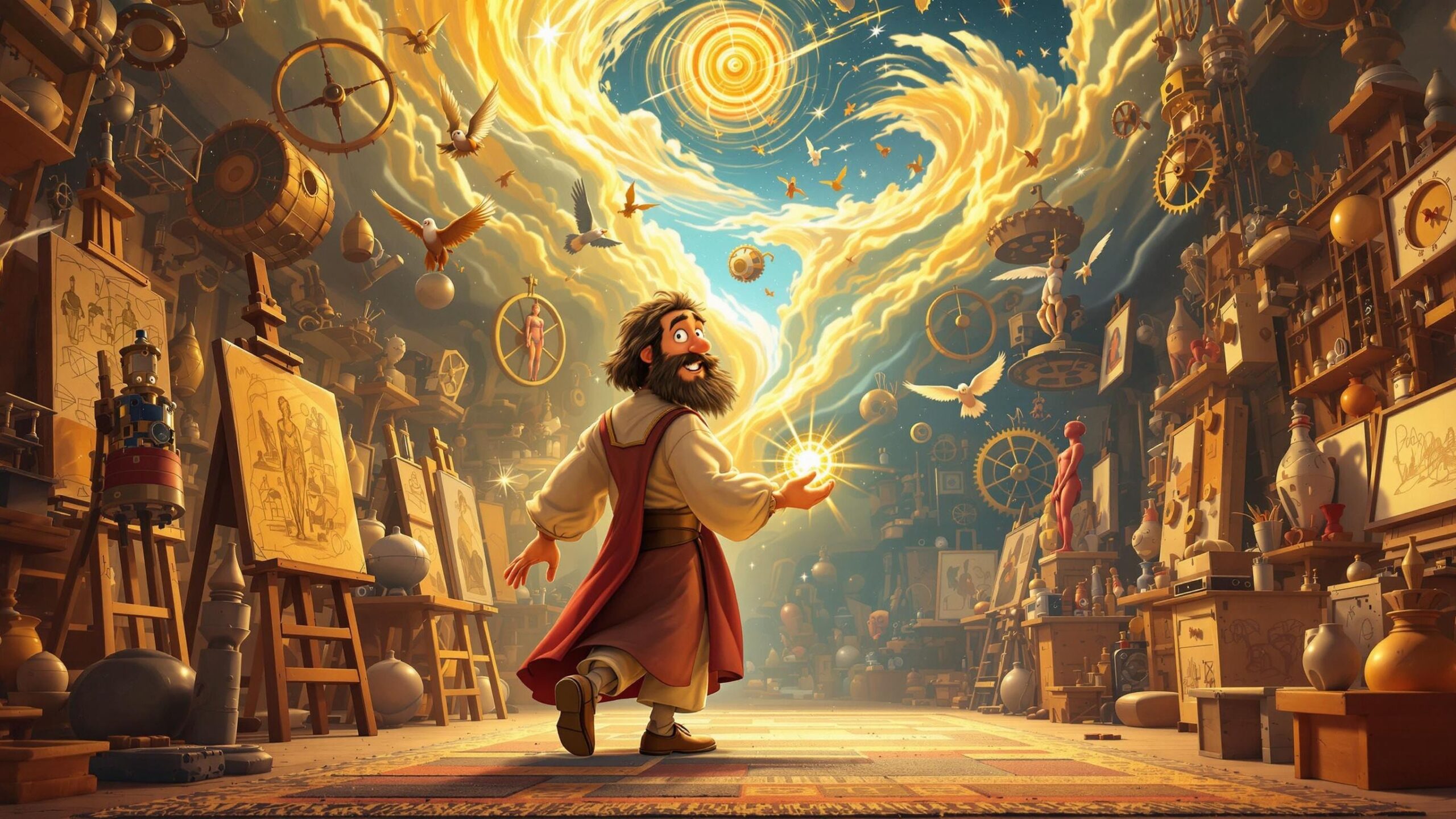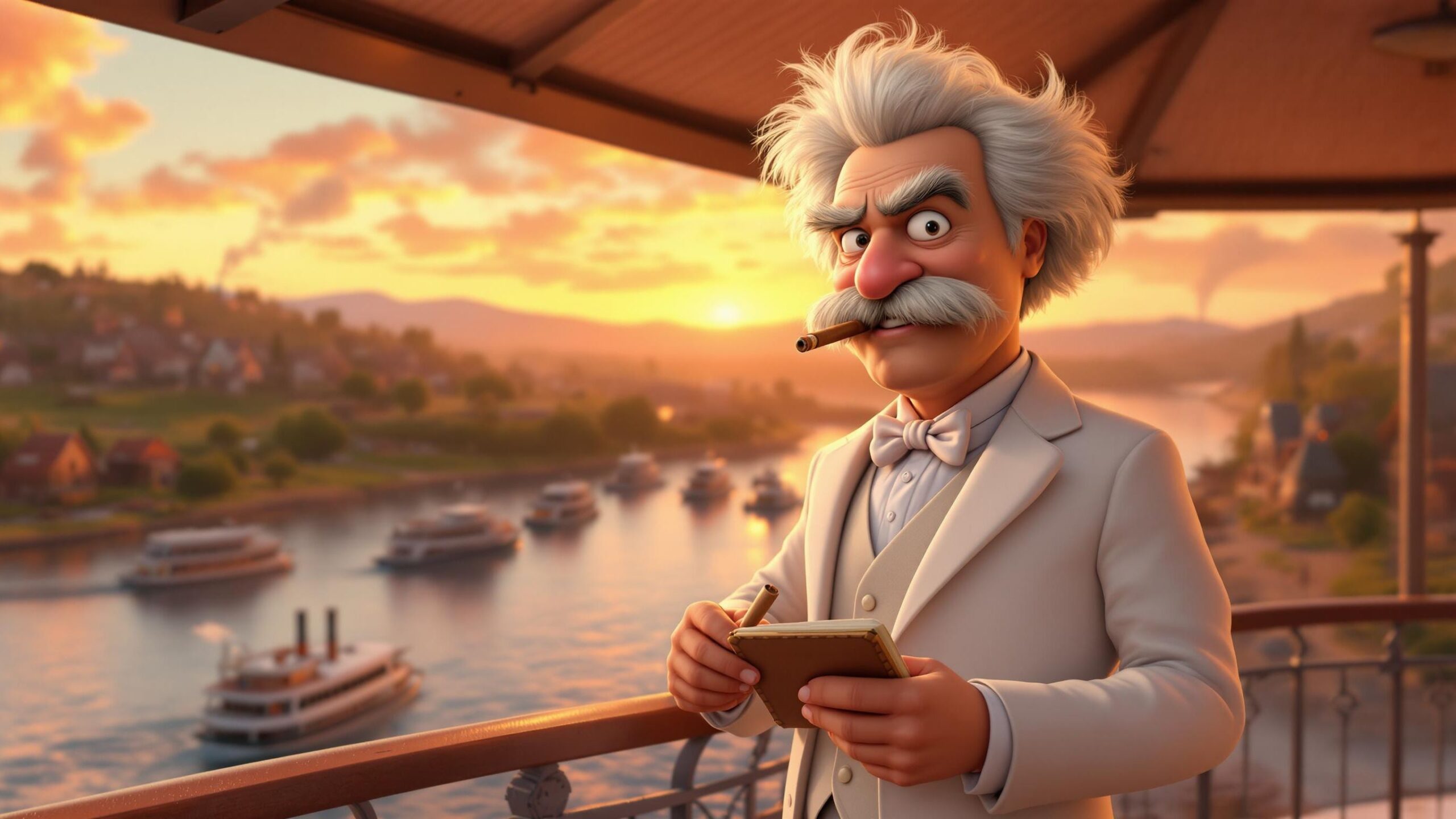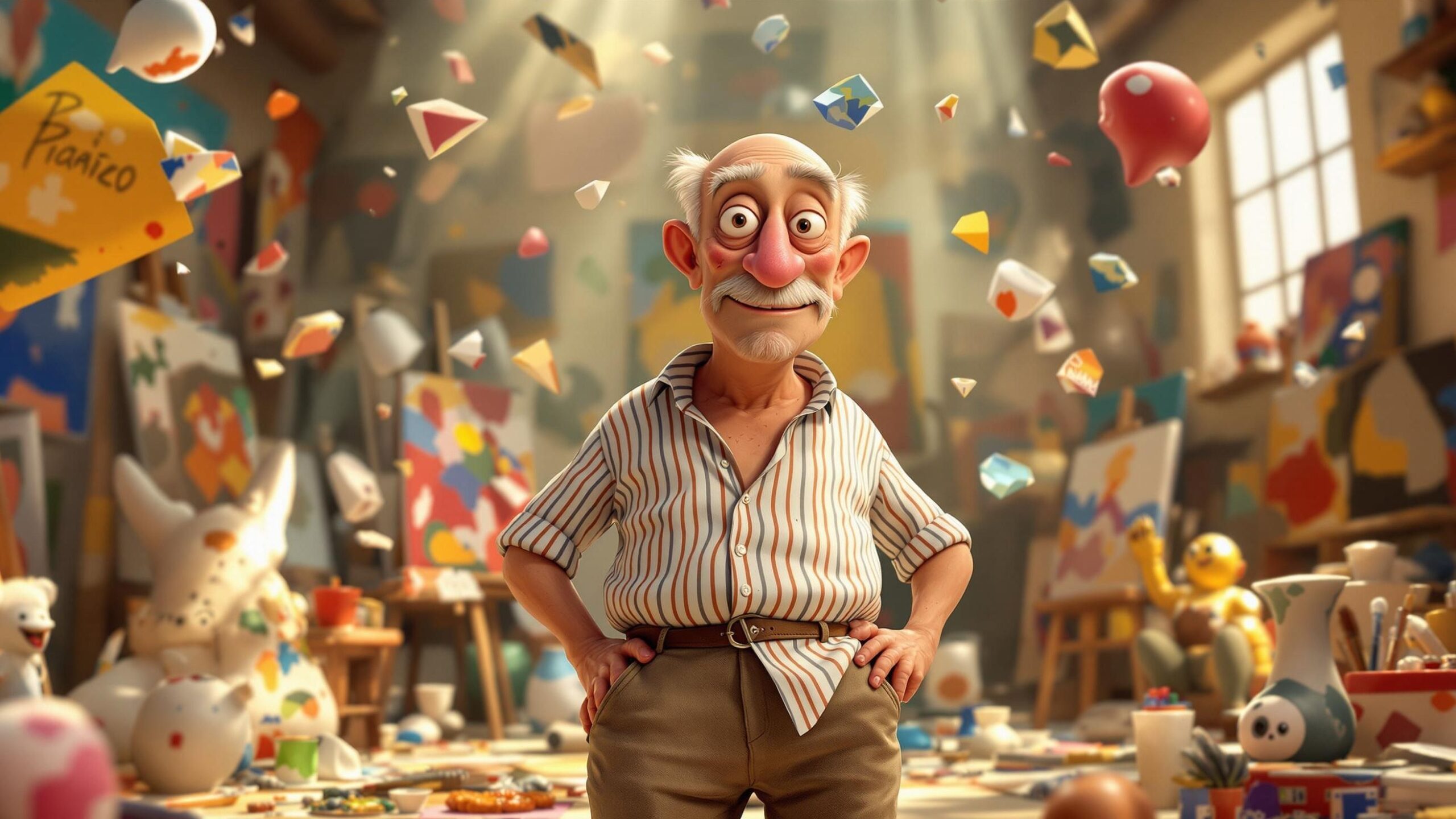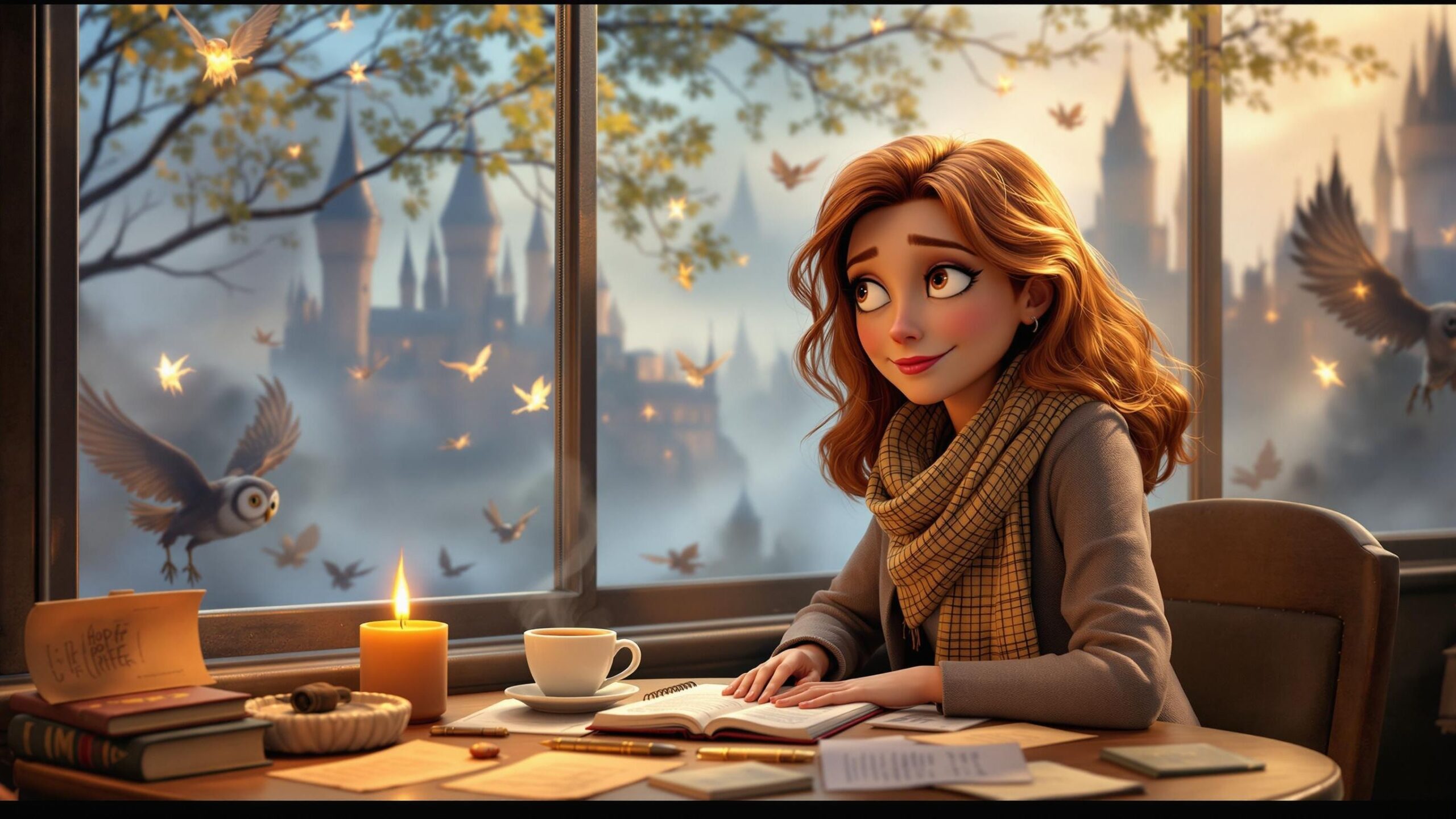Leonardo da Vinci wasn’t just the guy who painted Mona Lisa. He was the ultimate multitasker before the term existed—a man whose imagination outran the limits of his century. Born in 1452 in Vinci, Italy, Leonardo wasn’t content with mastering just one craft. He painted. He sculpted. He studied human anatomy with the precision of a surgeon. He designed flying machines before engines were even a whisper of possibility. For Leonardo, science and art weren’t separate—they were two parts of the same wondrous puzzle. In his world, the beauty of a flower and the mechanics of a bird’s wing were equally worthy of obsession. This is the story of the Renaissance’s most curious mind—a man who doodled tanks in his sketchbook and saw entire cities in motion in his head. Leonardo da Vinci wasn’t merely a man of his time. He was centuries ahead of it.
The Boy Who Asked Why
Leonardo’s early years in Vinci were filled with nature, notebooks, and an unstoppable urge to ask “why.” As an illegitimate child of a notary and a peasant woman, he didn’t receive a formal education in Latin or classical literature like many of his peers. But this lack of traditional schooling freed his mind to observe the world on his own terms. Birds in flight, water flowing over rocks, muscles flexing under skin—these weren’t just things that were; they were phenomena begging to be studied.
Even as a child, Leonardo saw no boundaries between curiosity and creativity. He sketched animals, designed mechanical contraptions, and questioned everything from the path of stars to the structure of trees. While most kids his age were memorizing catechisms, Leonardo was drawing gears and contemplating the nature of the soul. His apprenticeship in Florence under Andrea del Verrocchio only sharpened this fusion of the practical and the poetic. He wasn’t content to just paint a knight’s armor; he wanted to know how it was forged and whether he could improve it.
This habit of looking deeper—of seeing the invisible systems behind visible forms—would define his entire life. To Leonardo, the world was a masterpiece still in progress, and he was determined to add a few brushstrokes of his own.
The Artist Who Redefined Beauty
When it comes to art, Leonardo didn’t just follow the Renaissance rules—he rewrote them. His approach to painting was rooted in science: understanding the anatomy beneath the skin, the play of light on surfaces, and the subtle gradation of tone that would come to be known as sfumato. He sought not just to paint people but to reveal their inner lives through posture, gaze, and even atmosphere.
Mona Lisa is perhaps the best example of this. Her smile has launched a thousand theories, but its real magic lies in how alive she feels. Leonardo’s attention to detail—the glint in her eyes, the curve of her hands, the misty background—was revolutionary. She wasn’t a portrait; she was a presence. And The Last Supper? That wasn’t just a biblical scene. It was a dramatic freeze-frame of human psychology, showing fear, shock, betrayal, and love—all within one long table.
Leonardo made oil paint behave like a living thing. He made static images feel like moments caught in motion. He didn’t aim for idealized beauty; he aimed for truth—and truth, in Leonardo’s world, was deeply beautiful.
Anatomy of a Genius
Long before there were medical textbooks, Leonardo was dissecting human bodies to understand how we’re put together. His anatomical studies were not only detailed but artistically stunning. He sketched the heart like an engineer, the human fetus like a naturalist, and muscles like a sculptor. Every tendon, every vein, every twist of the spine fascinated him. And while his findings wouldn’t be published until centuries later, his anatomical drawings are still admired today for their precision and insight.
But Leonardo didn’t stop at human anatomy. He studied horses, cows, frogs, and birds with the same obsession. He saw patterns in how tendons worked across species, how joints allowed motion, how breathing coordinated with movement. To him, anatomy wasn’t just about the body—it was about the marvel of motion, the machinery of life.
What’s more, he drew these studies not with cold detachment, but with reverence. The human form, to Leonardo, was the ultimate masterpiece—a biological architecture that deserved to be explored, not just painted. His blend of science and spirituality made each sketch feel like a sacred map of life itself.
Machines, Flight, and Futuristic Visions
Flip through Leonardo’s notebooks and you’ll find the blueprints of dreams: helicopters, tanks, diving suits, self-propelled carts, and even designs for robotic knights. None of these inventions were built in his lifetime, but that wasn’t the point. Leonardo didn’t just imagine what was—he imagined what could be. His fascination with flight was especially intense. He studied bats, birds, and insects to understand how wings generated lift. His “aerial screw” is often considered a conceptual ancestor to the modern helicopter.
He wasn’t always right, of course. Some designs would never work practically, but that’s part of the charm. He wasn’t building for utility—he was sketching the future. For Leonardo, invention was play, experimentation, philosophy, and science all at once. He didn’t patent anything, didn’t publish grand treatises. He simply explored because he had to.
These mechanical sketches reveal another side of Leonardo: the engineer, the futurist, the restless thinker who couldn’t stop imagining possibilities. He may be remembered as a painter, but in truth, he was one of history’s earliest and most imaginative tech visionaries.
The Notebooks: Pages of Pure Wonder
Leonardo’s notebooks are perhaps his most profound legacy. Written in mirror script and stuffed with over 7,000 pages of sketches, observations, jokes, maps, doodles, and theories, they’re the closest thing we have to entering his brain. They span topics from botany to hydraulics to music. They’re chaotic, brilliant, messy, and endlessly captivating.
Within these pages, Leonardo juggled the poetic and the mathematical with effortless flair. He asked questions like, “Why is the sky blue?” and “How does the tongue taste different things?” He mapped out water flows, designed bridges, and recorded the angles of shadows. Every page is a whirlwind of curiosity made visible. And yet, he never organized them into a cohesive book or tried to explain it all. His genius wasn’t linear—it spiraled outward like a galaxy of thought.
The notebooks are not just historical artifacts. They’re an invitation to wonder, to experiment, to chase ideas even when they seem outlandish. They remind us that brilliance doesn’t have to be tidy to be extraordinary.
Architecture, Theater, and Everything Else
Leonardo’s mind was too big for just paintings and prototypes. He dabbled in architecture, designing ideal cities that prioritized hygiene, light, and beauty. He worked on stage designs for theatrical productions, creating elaborate mechanical effects and backdrops. He even conceptualized canal systems and fortress layouts, always balancing functionality with elegance.
His urban planning ideas were far ahead of their time. He proposed multilevel roadways to separate pedestrians from carts, clean water systems, and harmonious design that would elevate the human spirit. In a sense, Leonardo was trying to redesign the world to match the beauty he saw in nature.
What stands out is how easily he moved between disciplines. To him, architecture was a kind of sculpture. Theater was a living painting. Engineering was poetry in motion. He saw no silos, no barriers—only connections waiting to be explored. Leonardo da Vinci was not just interdisciplinary; he was anti-boundary.
A Life of Mystery and Legacy
For all his brilliance, Leonardo remains a bit of an enigma. He never married, had no known children, and left many works unfinished. He was both celebrated and misunderstood in his time, employed by powerful patrons yet often lost in thought and experimentation. He died in France in 1519, in the arms of King Francis I, who called him the wisest man who ever lived.
Today, Leonardo is everywhere—in textbooks, museums, documentaries, memes, and movie scripts. His influence reaches beyond the art world into medicine, engineering, philosophy, and space exploration. NASA engineers have referenced his designs. Modern artists and scientists alike cite his curiosity as inspiration.
Yet what makes Leonardo so compelling is not just what he did, but how he thought. He showed us that knowledge and imagination aren’t enemies. That you can sketch a muscle and a Madonna with the same reverence. That the scientific method can coexist with awe.
Conclusion: The Man Who Thought in Miracles
Leonardo da Vinci wasn’t just a master of the Renaissance—he was its embodiment. He painted with the eyes of a scientist and invented with the heart of an artist. In a world still obsessed with specialization, Leonardo reminds us that true creativity comes from connecting the dots between seemingly separate worlds. He didn’t separate science from beauty, logic from passion, or art from innovation. He lived in the spaces between, and that’s where his genius bloomed.
His life teaches us that it’s okay to chase too many dreams, to fill notebooks with questions, to marvel at shadows, and to be endlessly curious. Leonardo didn’t just leave behind works of art—he left behind a mindset. One that whispers to us, even now, that the world is full of wonder waiting to be explored.




